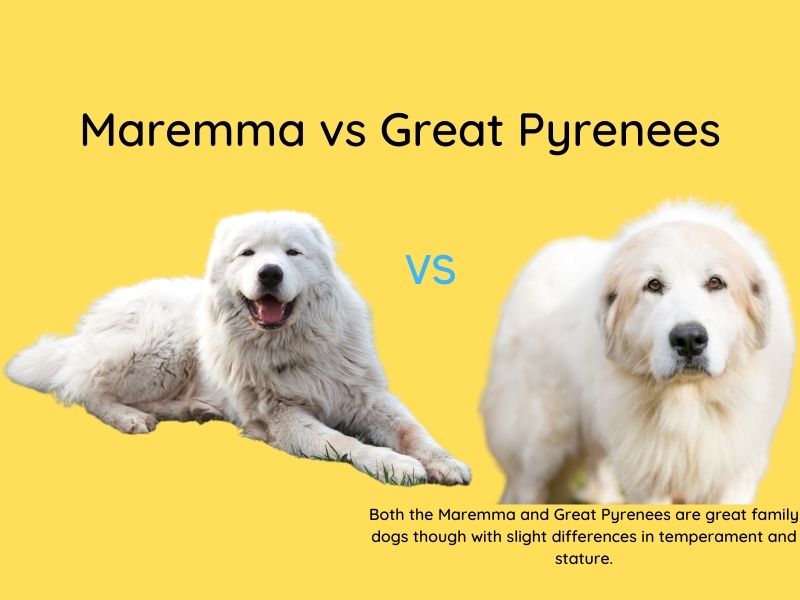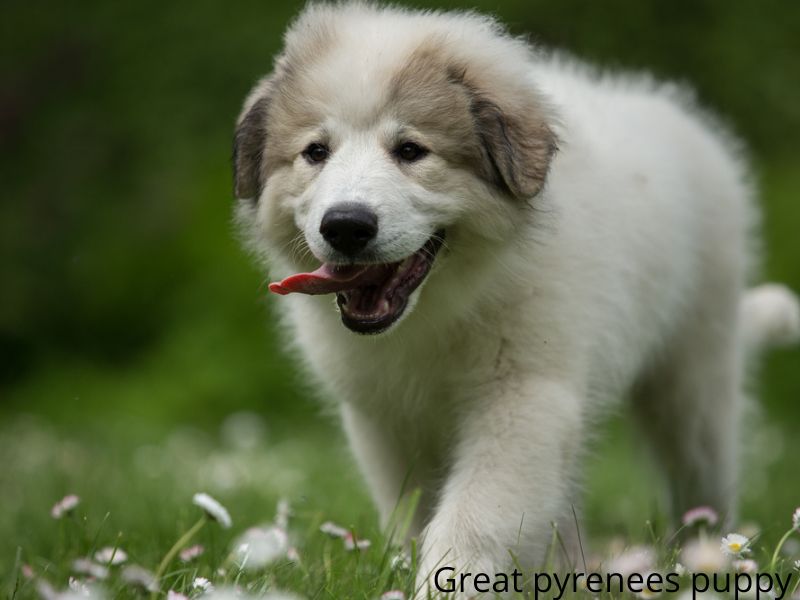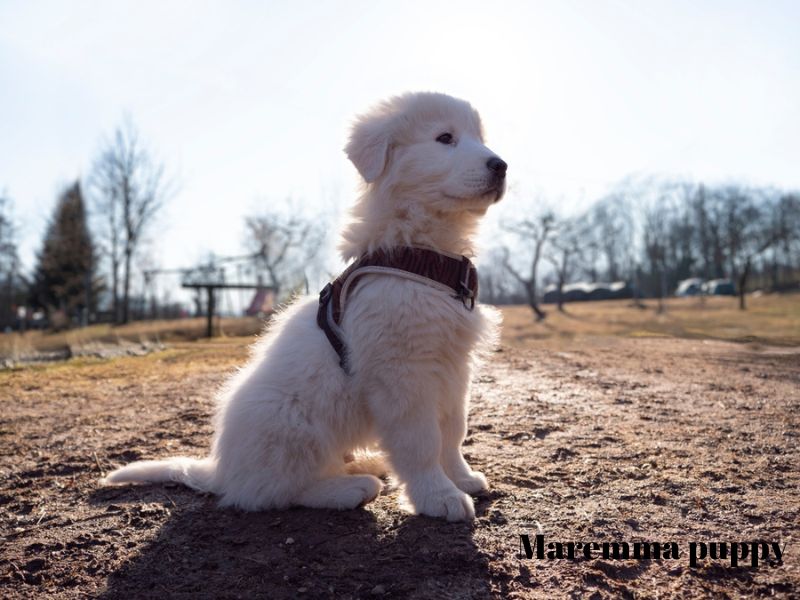The Maremma and Great Pyrenees differ in grooming requirements, size, family-friendliness, shedding, pedigree, fur/coat, e.t.c. However, both breeds have been historically employed in livestock guarding, they are all commonly preferred by dog owners as family-friendly pets.
Are Maremma and the Great Pyrenees the same?
The Maremma and Great Pyrenees are two different sheepdog breeds. They have a striking similarity that may confuse you since both dog breeds are generally physically identical and classified as guardian breeds.
For centuries, the two dogs were relied upon for livestock guarding in their areas of origin. They are used to facing and dealing with danger posed by bears, wolves, and other predators.

As a canine friend, both breeds can be extremely loyal, protective, and obedient with the right socializing and training. That can also help discourage them from attacking strangers and other pets such as dogs, and cats without being threatened.
Great Pyrenees dog profile

| Origin | Spain (300 BC) |
| Temperament | Friendly (but may not be easy with strangers. |
| Lifespan | 10-12 years |
| Height | 70-82 cm |
| Weight | 88 to 119lbs |
| Intelligence | Averagely intelligent compared to the Maremma sheepdog |
| Temperature tolerance | 0°F to 85°F |
| Barking/Howling | Very often |
| Hypoallergenic | No |
| Shedding | Average-high |
| Dew claws | Has two dew claws on the rear feet. |
| Common health problems | Addison’s Disease; Cataracts; Elbow Dysplasia; Entropion |
Note: For the Pyrenean mountain dog, having single dewclaws on their rear feet, may be a sign that the breed is not pure.
Maremma dog profile

| Origin | Italy (1400 AD) |
| Temperament | Very friendly but averagely stranger-friendly |
| Lifespan | 11-13 years |
| Height | 65-73 cm |
| Weight | 35-45 kg |
| Intelligence | High |
| Temperature tolerance | 20°F to 85°F |
| Barking/Howling | Average |
| Hypoallergenic | No |
| Shedding | Heavy |
| Dewclaws | Have dewclaws on the front legs’ inside and sometimes on the hind/rear legs. |
| Common health problems | Obesity; Vaccination Sensitivity |
Maremma vs Great Pyrenees: Differences
Differences between the Maremma and the Great Pyrenees include:
Appearance
The Maremma sheepdog has a large, muscular stature. Some of the people who have owned this dog breed say their build is similar to that of a huge bear. Due to their size, the breed does not need help in dealing with intruders and predators.
The height and weight of the sheepdog range from 65-73 cm and 35-45 kg, respectively. It is classified as a moderately large dog breed.
In addition, the coat of the breed, with a thick undercoat, is covered with a pure, commanding white color. The hair found on the neck of the dog is much longer and denser. Still, you can find patches of pale yellow on the coat.
The Maremma sheepdog breed is known for its heavy shedding and requires lots of upkeep and grooming, particularly during spring.
On the contrary, The Pyrenean Mountain Dog stands tall and weighs from 70-82 cm and 40-54 kg, respectively. Its size and weight are slightly bigger than that of the Maremma sheepdog making it classified as a giant breed. This is one vital difference between the two sheepdogs.
The Great Pyrenees also dons a double coat that has an elongated, wiry solid white hair that can either be wavy or straight depending on the particular breed. The coat may sometimes have light brown or gray marks.
Shedding of the Great Pyrenees ranges from average to high. They are mostly not pets that demand a high level of maintenance. Since shedding is relatively very little, the dog is an excellent option if you are sensitive to allergies.
Temperament

Being an originally guard dog for livestock, the Maremma is an excellent, affectionate canine friend to keep at home.
The breed is still considered a great watchdog as it is fearless and enduring. It is always ready to attack when there is a threat from a predator that can harm you or your livestock.
As a dog that tends to be self-reliant, it requires to be properly trained and socialized. This will enable the intimidating pet to be obedient and obey any of your given commands like ‘come’, ‘stand’, and ‘sit-stay’.
Since the family dog is intelligent, it can learn and be socialized quicker to achieve the best possible temperament and behavior.
The Maremma is an extremely active sheepdog that requires plenty of exercise and room for movement.
In contrast, the Great Pyrenees has a better temperament than the Maremma. However, like other guarding dogs, the Great Pyrenees can also benefit from early and appropriate training and socialization.
Due to its relatively bigger size, it may knock things over indoors when not properly trained and does not understand or follow your commands.
Also, unlike the Maremma, the Great Pyrenees is not very active. It prefers to spend its time lying lazily on the couch.
Origin
In Italy, the Maremma is often refferred to as the Abruzzese Sheepdog or Maremmano. The Abruzzese and the Maremma are the central Italian regions that lay claim to this dog breed, with its origin traced to more than 15 centuries ago.
The family dog breed was useful in safeguarding livestock against other wild animals such as undomesticated dogs, wolves, and even bears. Deployment of the Maremma was also done to safeguard other animals and birds such as penguins, llamas, chickens, alpaca, and geese.
On a small Australian island adjacent to Warnambool, the Maremma sheepdog is being used to protect Little penguins. Also known as the blue penguins, they are the smallest penguin species. Initially, the population of the birds was under severe decline owing to attack by predators like humans and the European red foxes.
That necessitated the introduction of the guardian dog on the island by the local government to discourage predation. In consequence, the population of blue penguins began thriving.
Different bloodlines of the Maremma bred in Italy produced breeds that are similar to the Maremma sheepdog that is popular in the USA.
The breed was first introduced in the USA around the 1970s as part of a scientific study to examine its ability in guarding livestock. Then, the government wanted to find a safe alternative method of protection.
The introduction of the family dog in the USA is thought to have helped in saving its population from immense depletion. Especially during World War 2, the invading German military always hounded and shot this menacing dog.
In 1924, the Maremma became recognized as a pure dog breed. At the present, it is also found in other countries, including Australia and Canada.
On the other hand, the Great Pyrenees has served as a family dog since 1800 BC. The Great Pyrenees is also known as “the big dog of the mountain”, or the Pyrenean Mountain Dog.
Originally, the sheepdog inhabited the Pyrenees Mountains, which acts as the natural border separating France from Spain. As a working dog, it guarded its owners and livestock against potential threats, including rustlers and bears.
The innate patience of this sheepdog was forged when it used to roam the chilly mountain for many days consecutively with the sole aim of guarding sheep.
Around the 17th century, the dog breed was adopted by the regime of King Louis XIV in France to serve as a royal dog for protecting the chateaux. That elevated the status of the dog since for centuries it was generally owned by peasants.
World War 1 and 2 also took a toll on the population of the Patou. The breed came in handy in transporting military supplies across the punishing terrain and weather of the Pyrenees mountains.
The total elimination of the Great Pyrenees was averted by being shipped to Europe and the USA.
The first breed is thought to have been introduced in America by Marquis de Lafayette, a legendary French general. The military officer fought in collaboration with the 1st U.S. president between 1765 and 1791 in the American Revolution.
In 1933, the Great Pyrenees gained recognition from the American Kennel Club. Today, the family dog is a beloved canine friend adept at guarding and acting as a reliable companion at home.
In conclusion, as family dogs, the Maremma and the Great Pyrenees have a few similarities that may be confusing to a potential inexperienced owner. The dog breeds have a huge size, pure white coats, and the same guardian background. But, having seen the main differences, hopefully, it becomes easier to choose your preferred breed. Any of the family dog breeds can be an important addition to your home.
Further references
- Daniel Kinka, Utah State University: Evaluating the Effectiveness of Livestock Guardian Dogs
- Dan Macon, University of California: Which Livestock Guardian Dog Breed?
Tommy Dickey, Jim and Linda Hindes, and Linda Whisenhunt, University of California: The Versatile Great Pyrenees